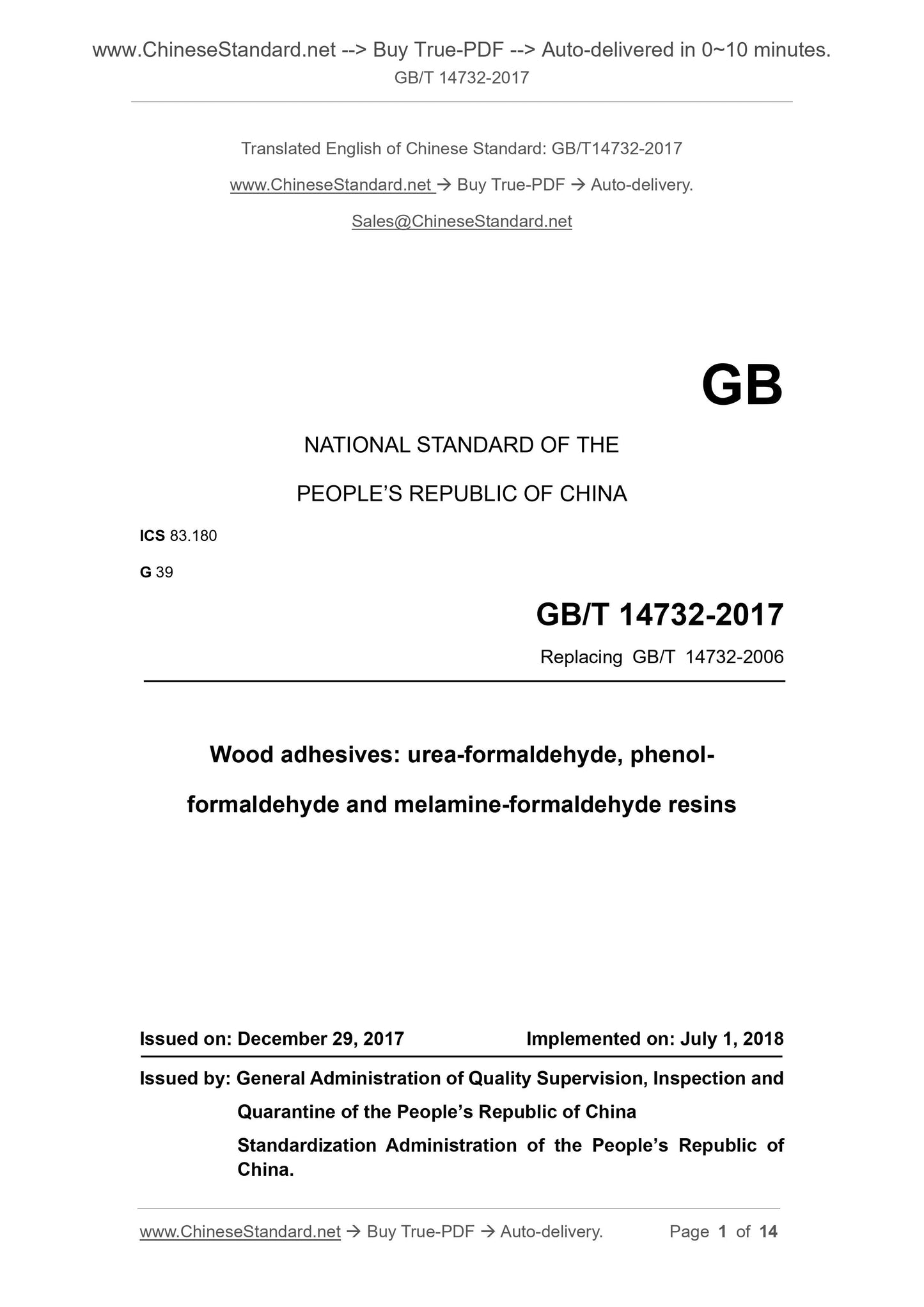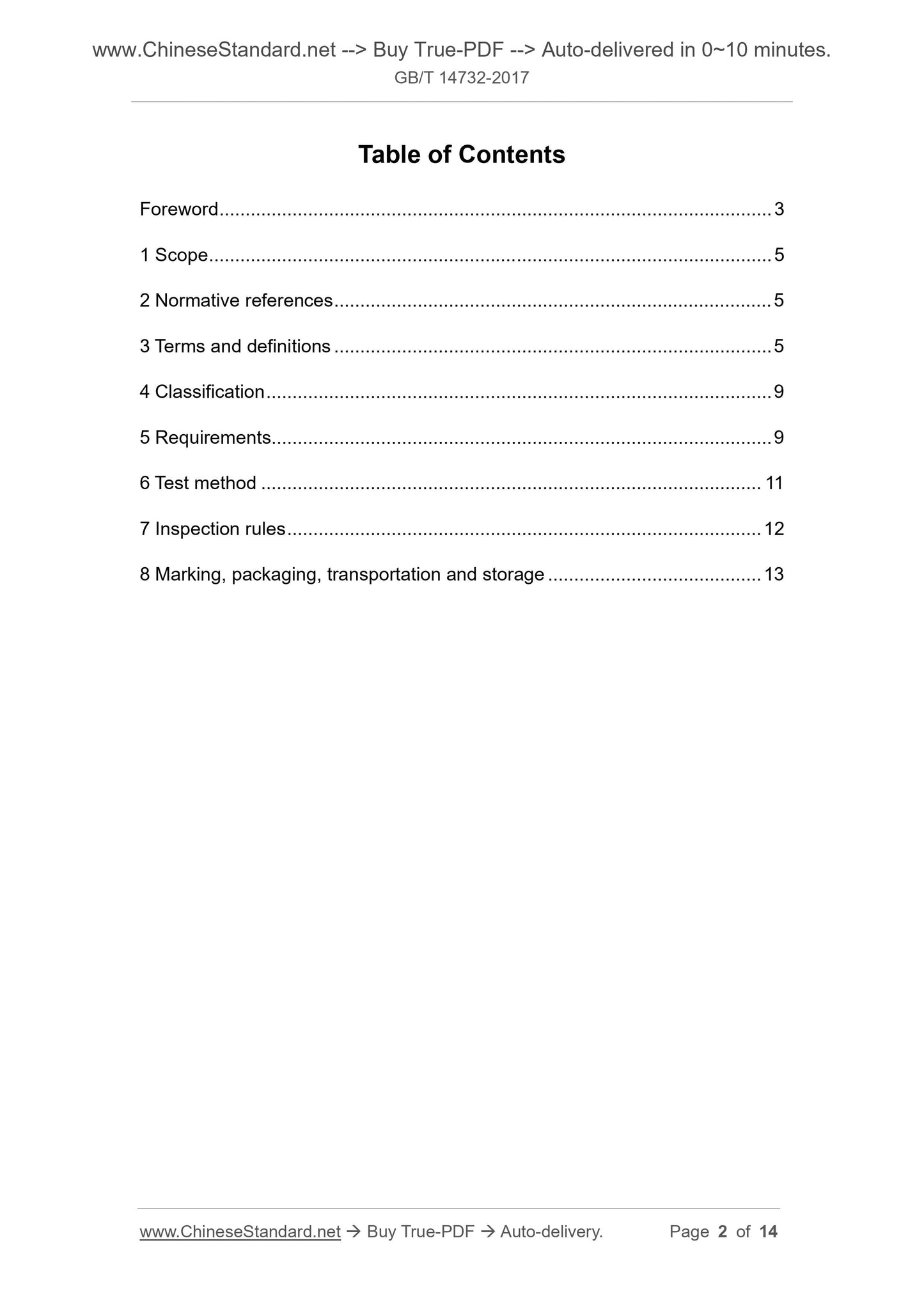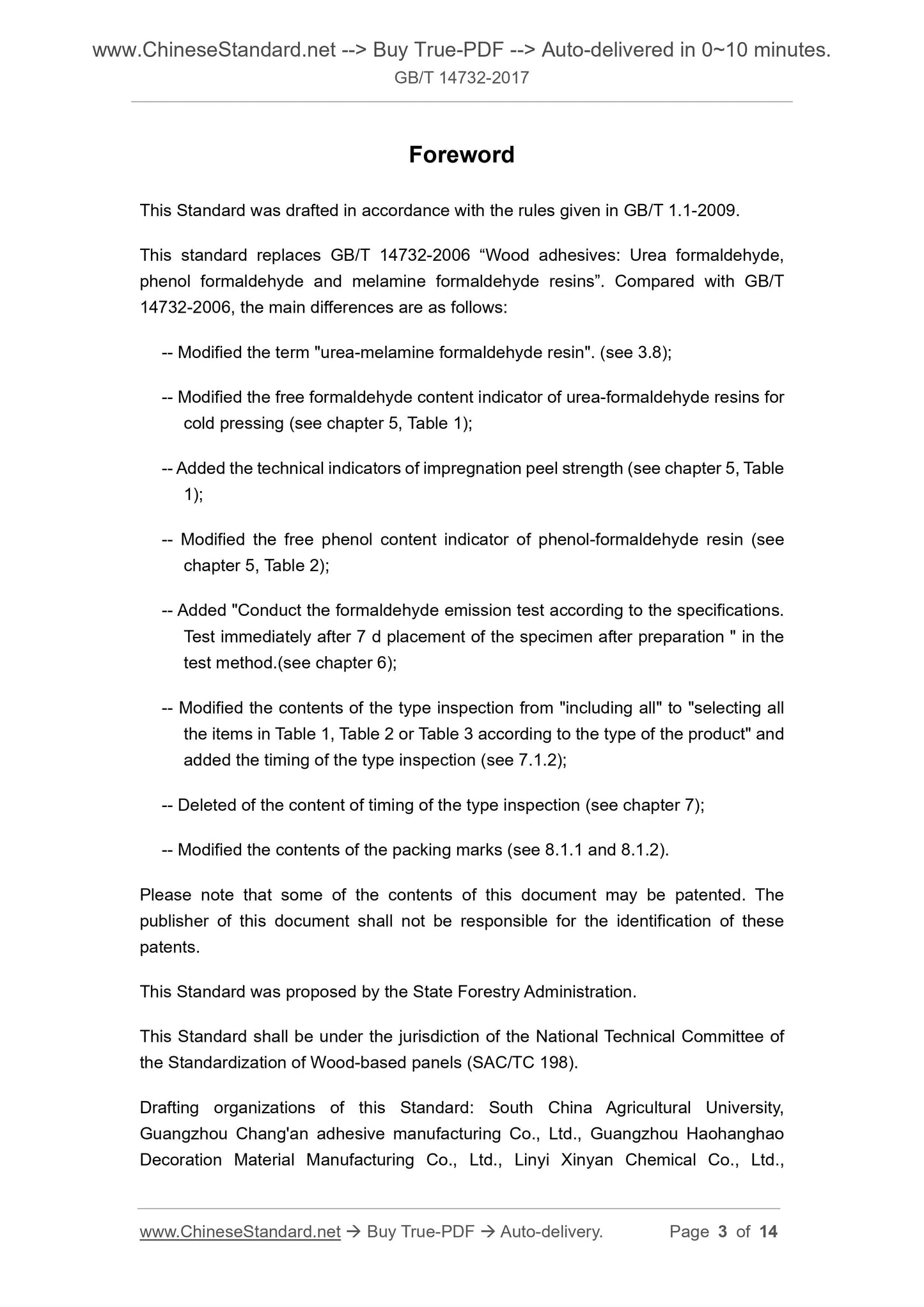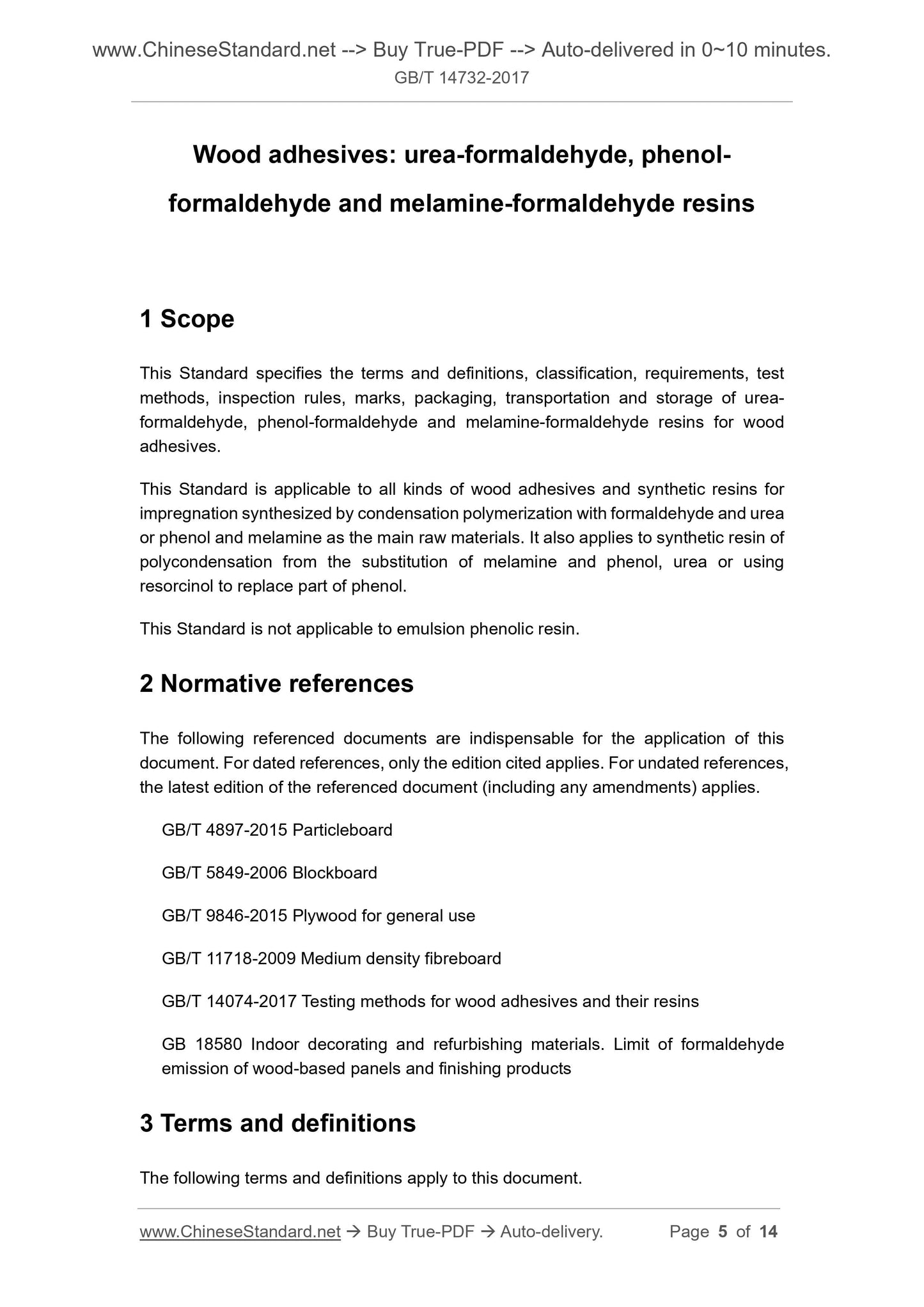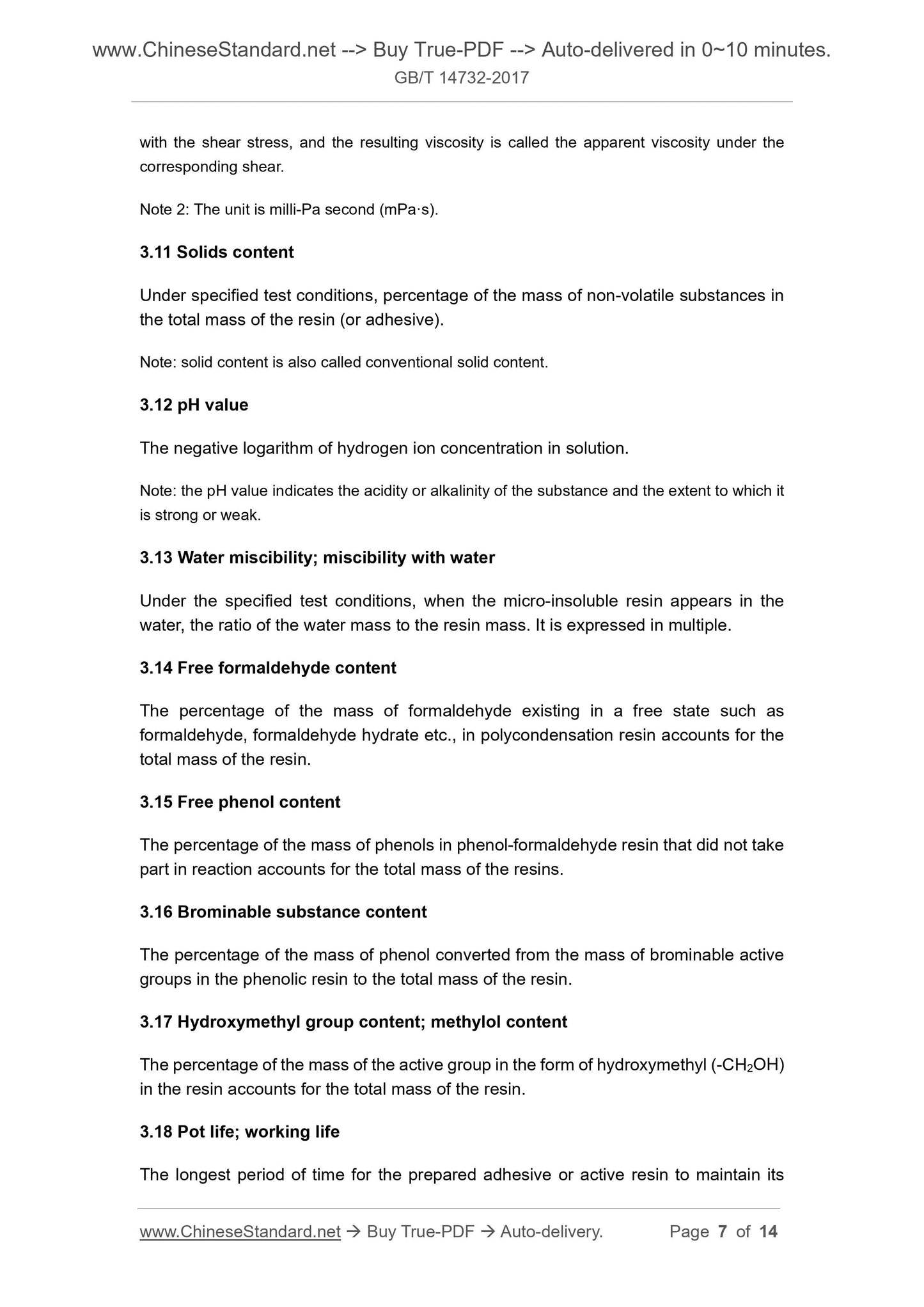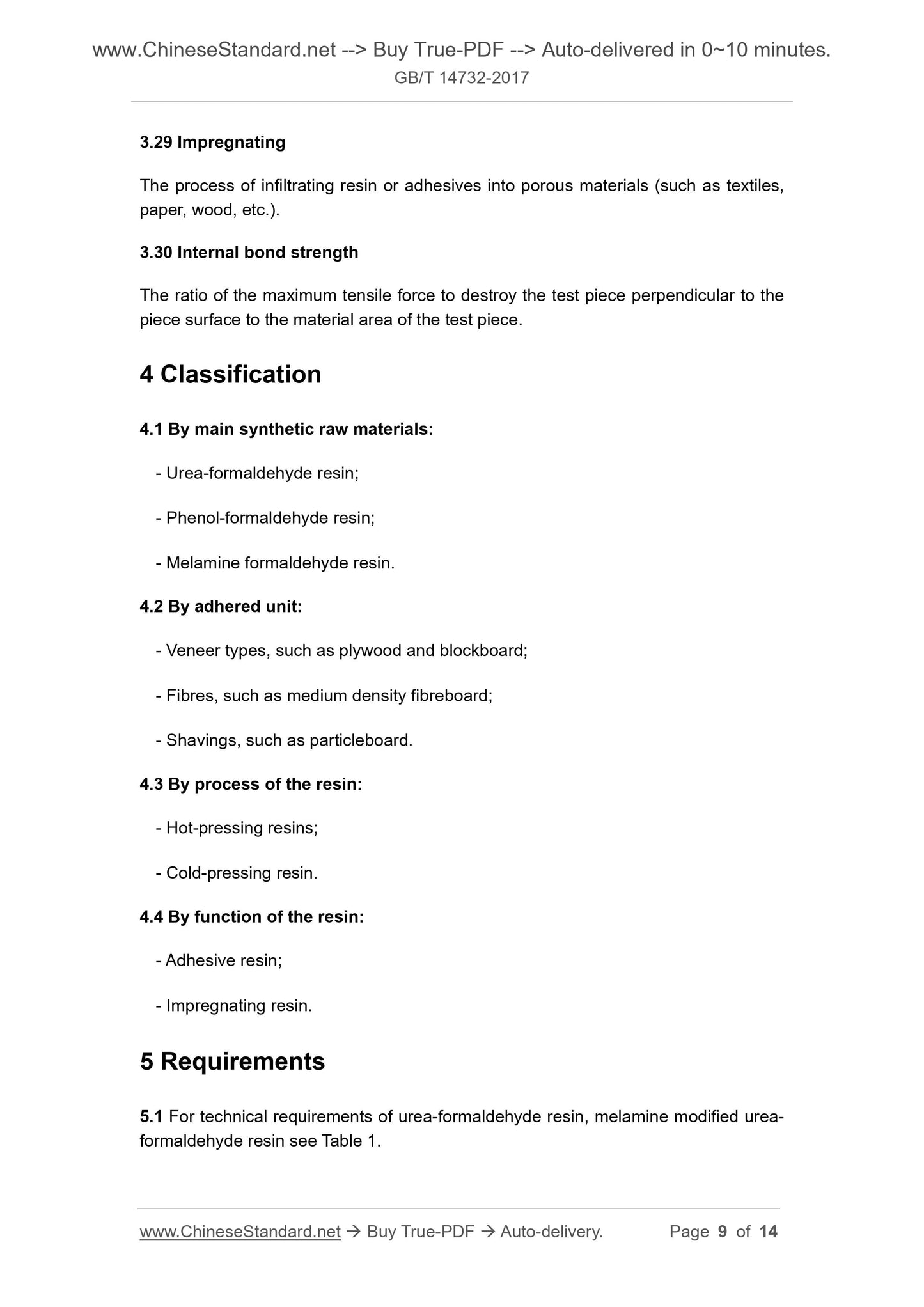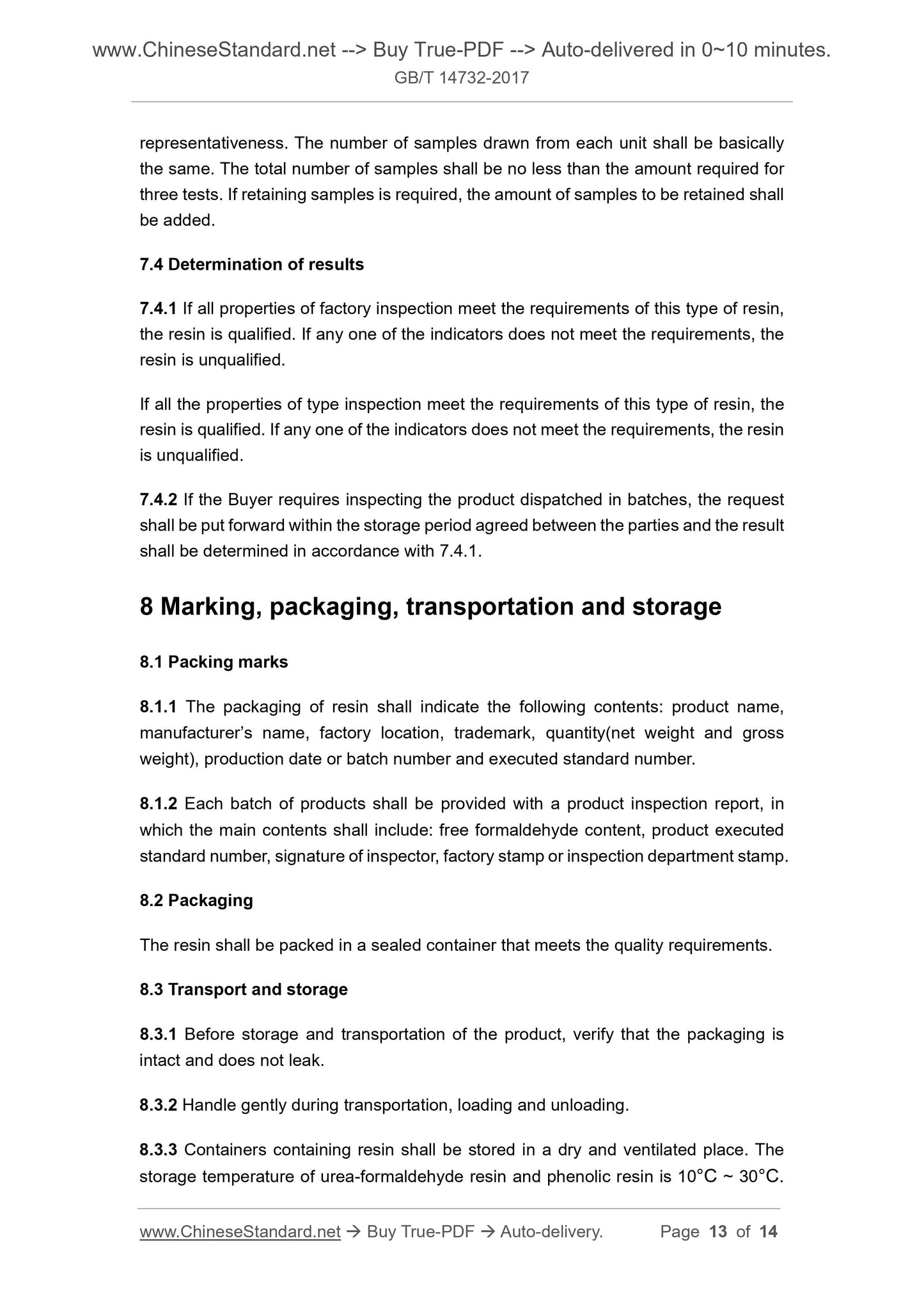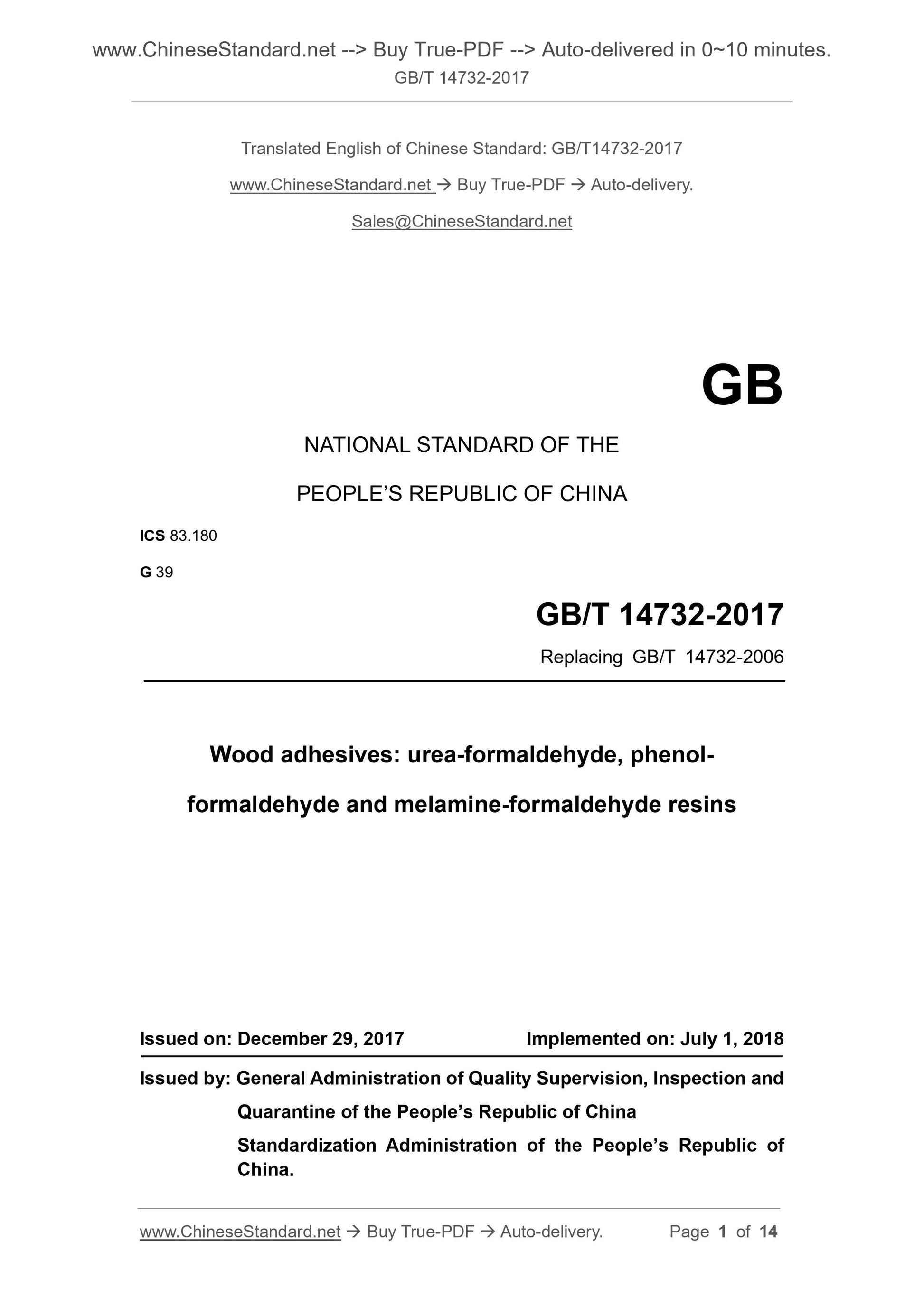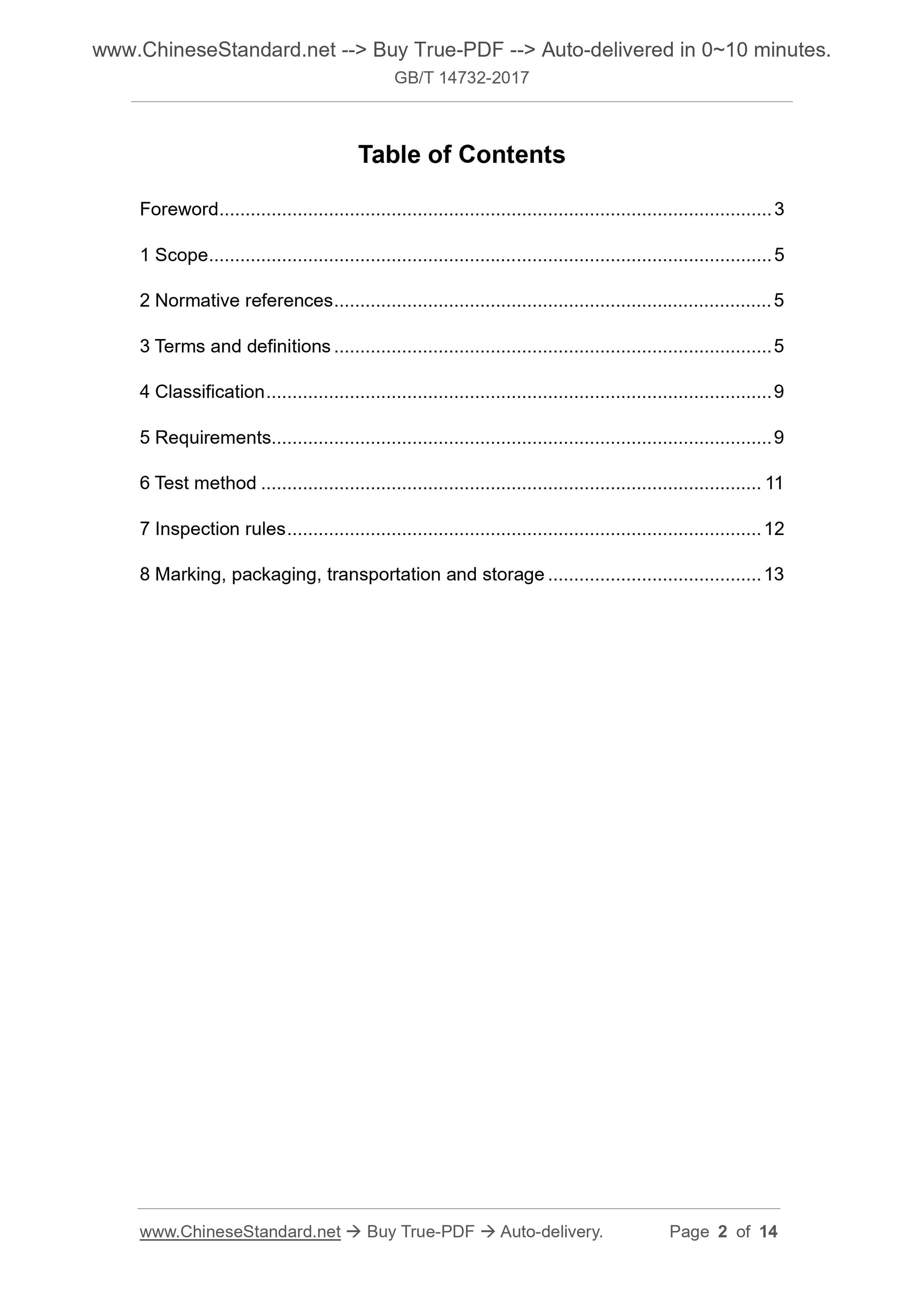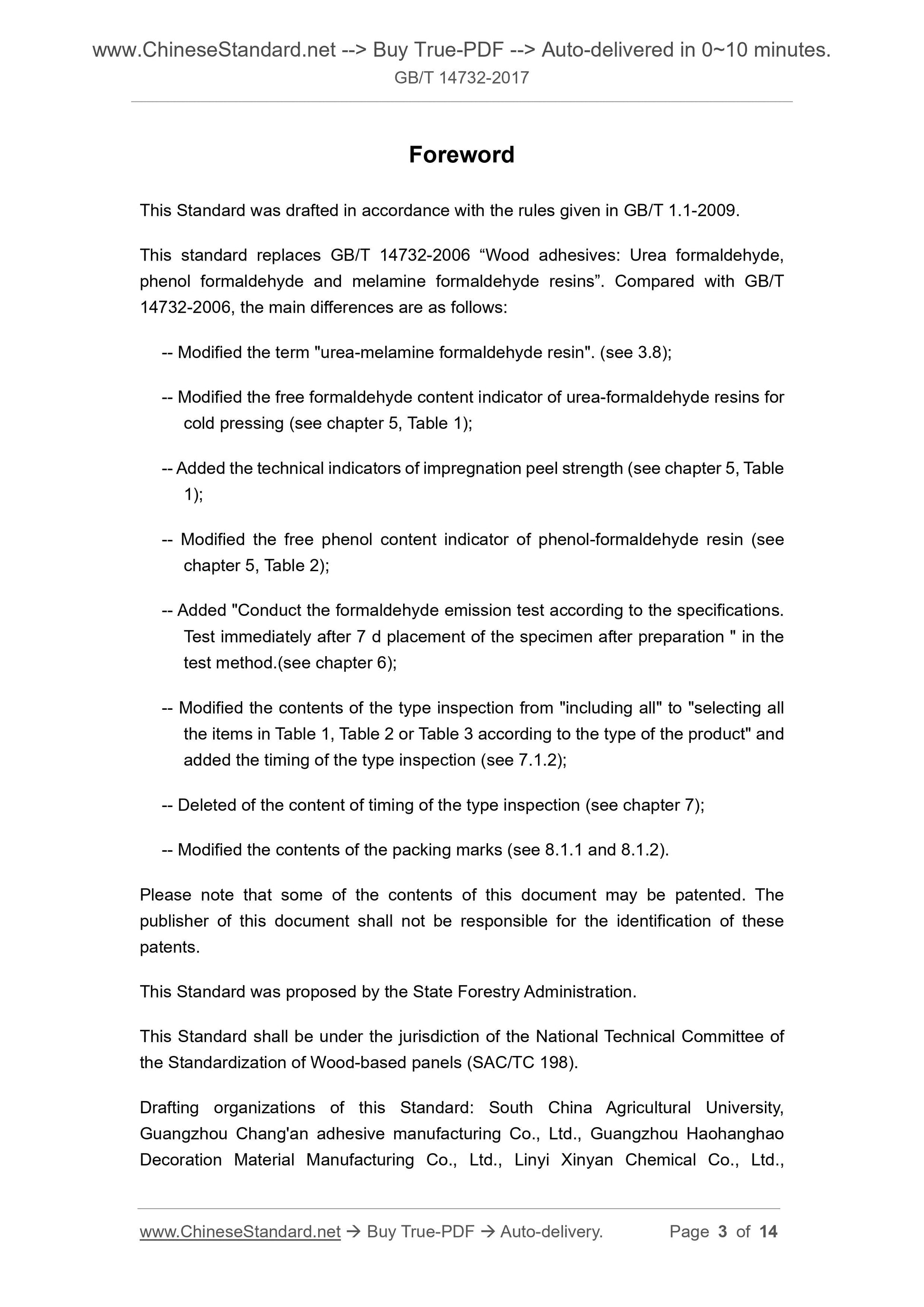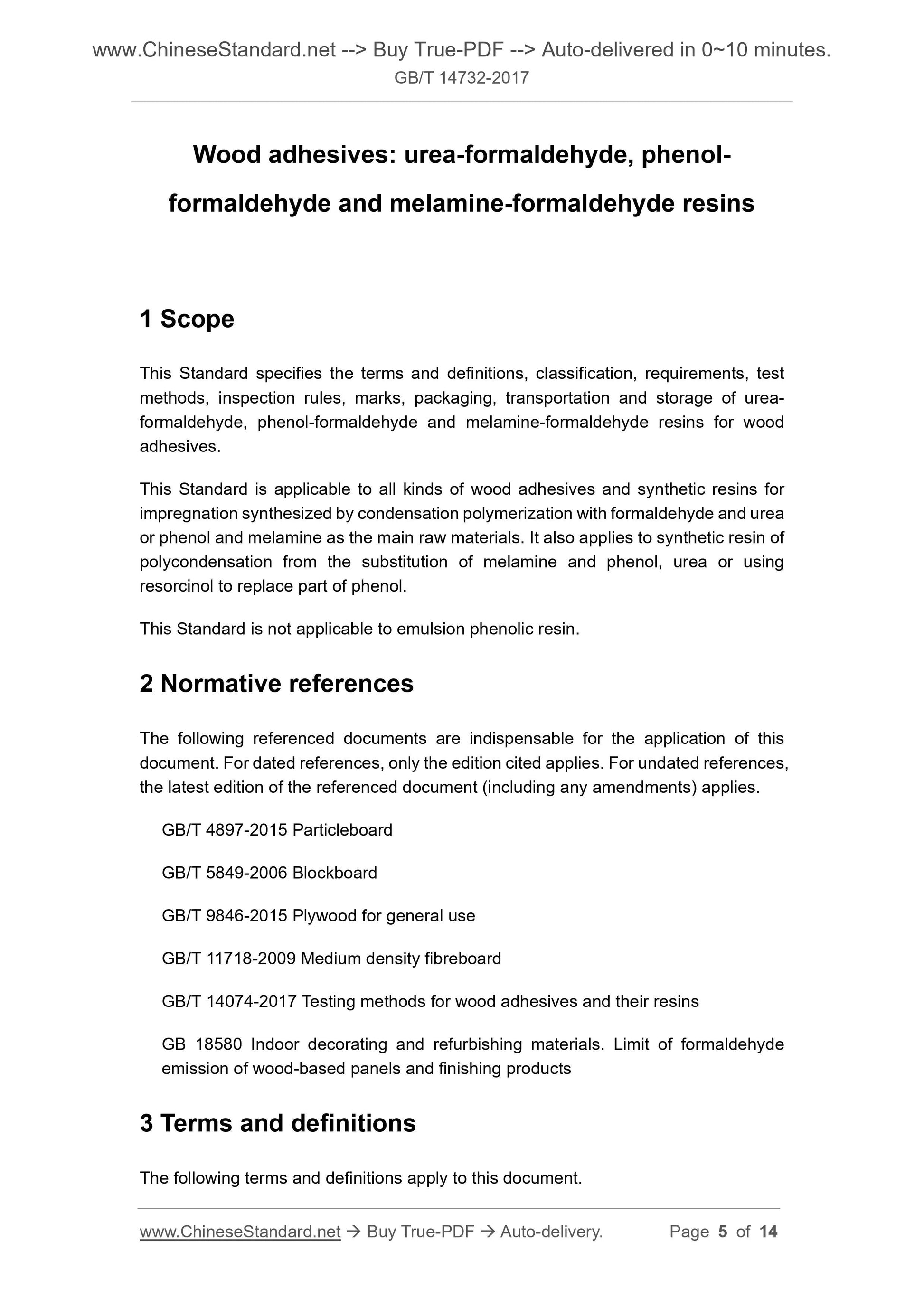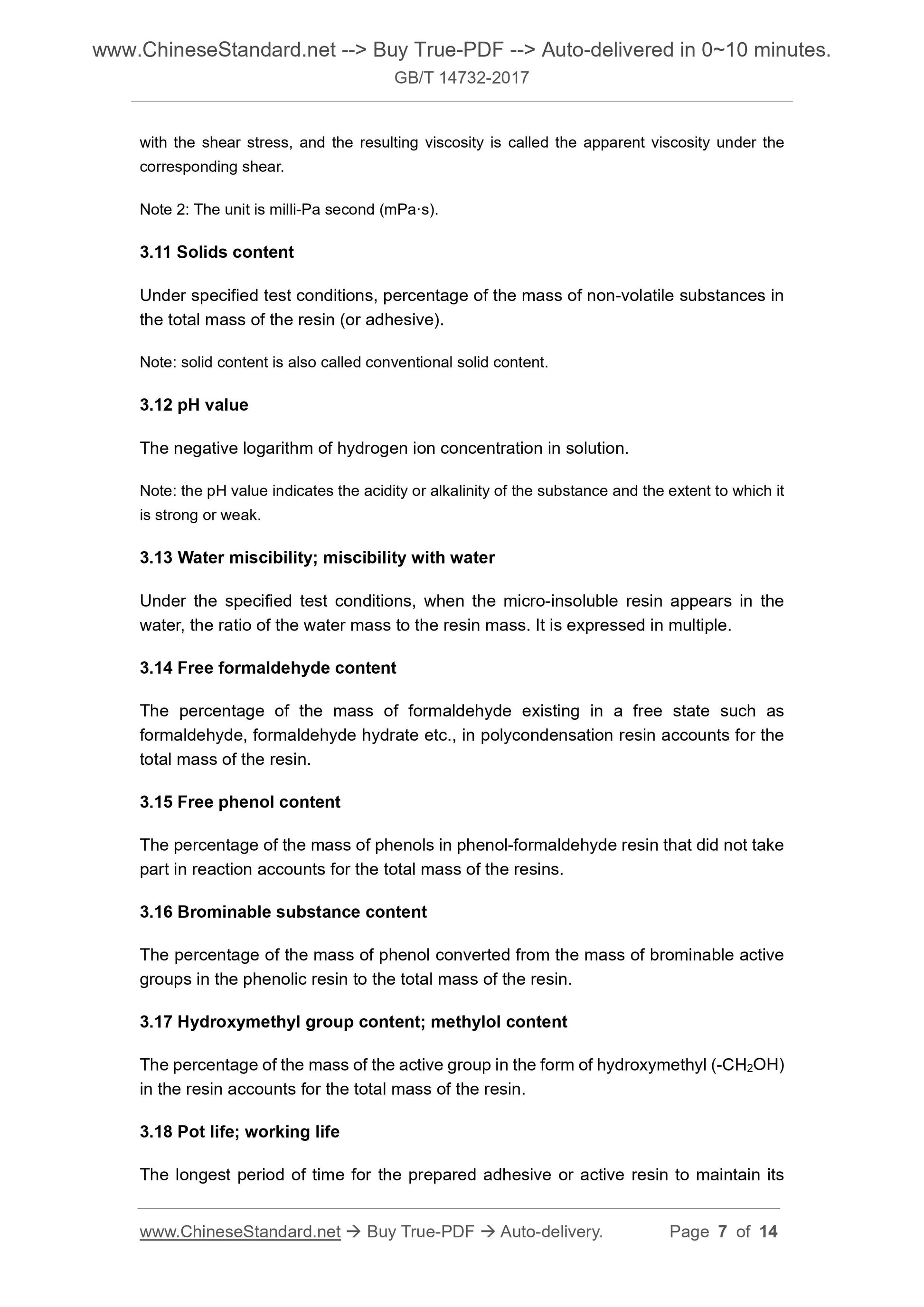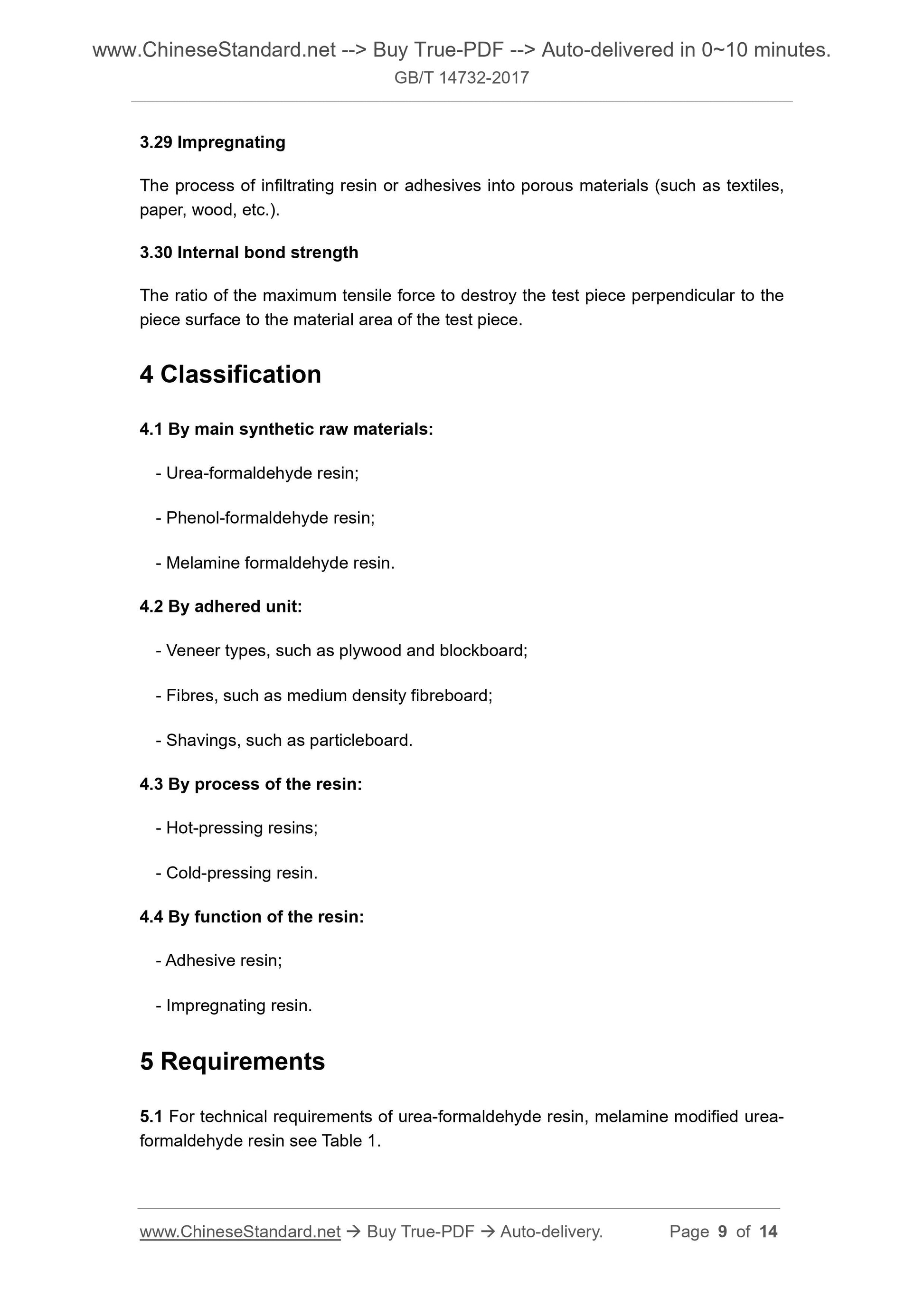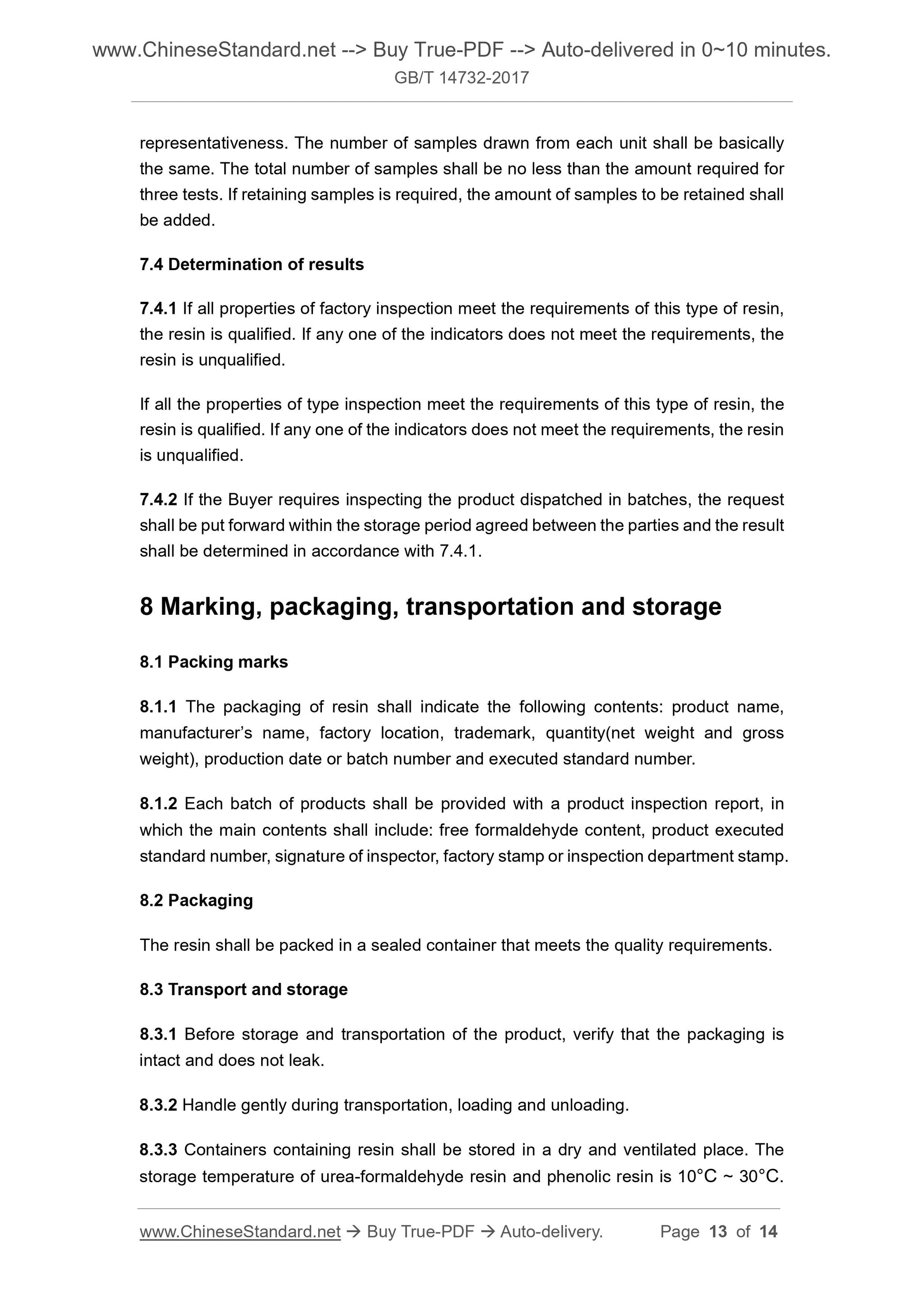1
/
of
7
www.ChineseStandard.us -- Field Test Asia Pte. Ltd.
GB/T 14732-2017 English PDF (GB/T14732-2017)
GB/T 14732-2017 English PDF (GB/T14732-2017)
Regular price
$130.00
Regular price
Sale price
$130.00
Unit price
/
per
Shipping calculated at checkout.
Couldn't load pickup availability
GB/T 14732-2017: Wood adhesives: urea-formaldehyde, phenol-formaldehyde and melamine-formaldehyde resins
Delivery: 9 seconds. Download (and Email) true-PDF + Invoice.Get Quotation: Click GB/T 14732-2017 (Self-service in 1-minute)
Newer / historical versions: GB/T 14732-2017
Preview True-PDF
Scope
This Standard specifies the terms and definitions, classification, requirements, testmethods, inspection rules, marks, packaging, transportation and storage of urea-
formaldehyde, phenol-formaldehyde and melamine-formaldehyde resins for wood
adhesives.
This Standard is applicable to all kinds of wood adhesives and synthetic resins for
impregnation synthesized by condensation polymerization with formaldehyde and urea
or phenol and melamine as the main raw materials. It also applies to synthetic resin of
polycondensation from the substitution of melamine and phenol, urea or using
resorcinol to replace part of phenol.
This Standard is not applicable to emulsion phenolic resin.
Basic Data
| Standard ID | GB/T 14732-2017 (GB/T14732-2017) |
| Description (Translated English) | Wood adhesives: urea-formaldehyde, phenol-formaldehyde and melamine-formaldehyde resins |
| Sector / Industry | National Standard (Recommended) |
| Classification of Chinese Standard | G39 |
| Classification of International Standard | 83.180 |
| Word Count Estimation | 10,142 |
| Date of Issue | 2017-12-29 |
| Date of Implementation | 2018-07-01 |
| Older Standard (superseded by this standard) | GB/T 14732-2006 |
| Regulation (derived from) | National Standards Bulletin 2017 No. 32 |
| Issuing agency(ies) | General Administration of Quality Supervision, Inspection and Quarantine of the People's Republic of China, Standardization Administration of the People's Republic of China |
Share
